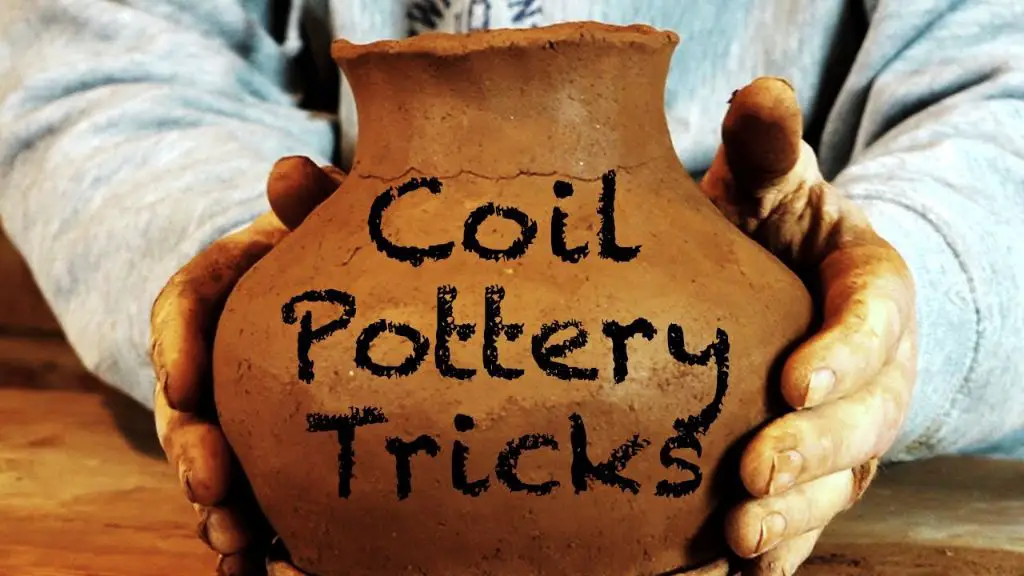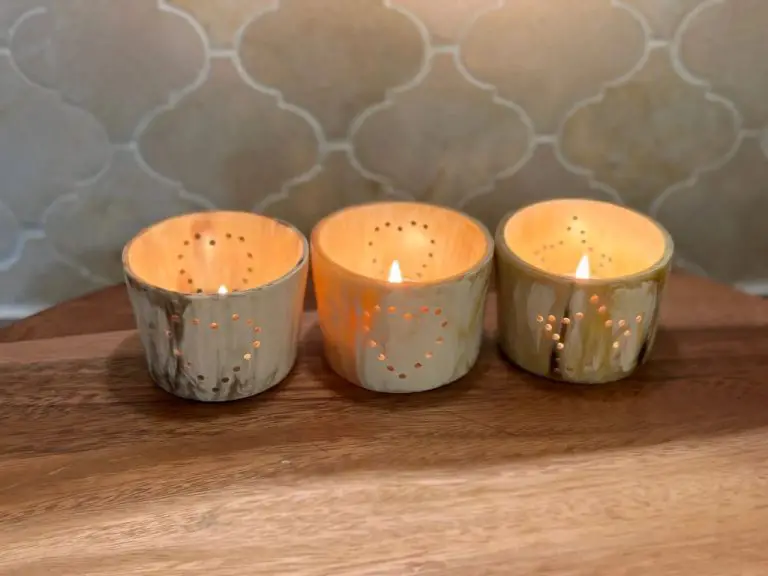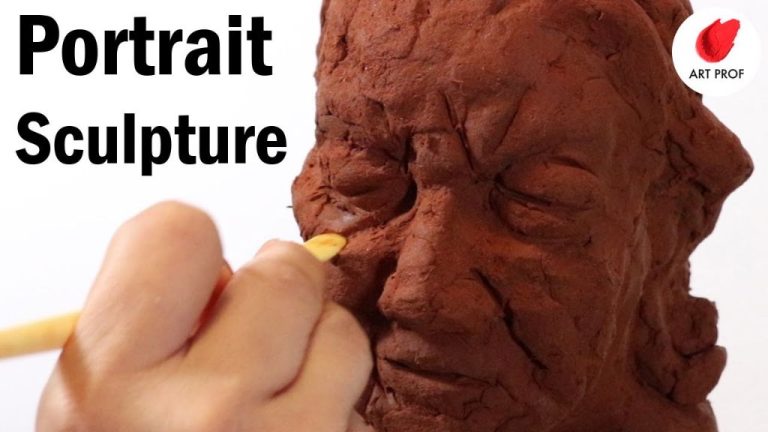What Ceramic Tools Can Be Used To Help Shape And Join Coils Together?
Coiling is a handbuilding technique used in ceramic sculpture and pottery. It involves rolling out “snakes” or coils of clay and then joining the coils together to build up the form. Coils allow ceramic artists to build both functional pottery pieces like vases and bowls, as well as free-form sculptural pieces.
There are several reasons to join coils together rather than just sculpting a solid piece of clay:
- Coils dry more evenly, reducing cracking and warping.
- Forms can be built up gradually to any size.
- Textures and patterns can be created by varying the coils.
- It’s easier to create certain shapes like tall vases using coils.
Joining the coils properly is key though. Specialized ceramic tools help connect and blend the coils into one solid form. In this article, we’ll cover the main tools ceramic artists use when constructing with coils.
Ribbon Tools
Ribbon tools are thin, flexible loops of metal that can be pressed against clay coils to blend them together or create decorative patterns. They come in various widths, from extra fine to wide, allowing potters to achieve different effects.

These tools are essential when joining coils together to create a smooth, seamless surface. Pressing the ribbon tool into the seam helps bond the coils and eliminates cracks. The thin profile enables potters to reach into narrow spaces and compress the clay. Using a gentle rocking motion, ribbon tools compress the coils without damaging the clay walls.
In addition to joining coils, ribbon tools can add beautiful decorative elements. Dragging the ribbon over the surface creates lines, curves and geometric patterns. Varying the angle and pressure results in different effects. Ribbon tools require little clay displacement, allowing potters to texture the surface while preserving the overall form.
With their versatility, ribbon tools are a ceramic artist’s best friend. Keeping a range on hand in different widths gives potters options when constructing and embellishing coiled vessels.
Loop Tools
Loop tools are a staple in every potter’s tool kit and are used for carving, decorating, trimming, and removing clay from ceramic pieces. They consist of a metal rod that is bent in a loop or oval shape at the end. The loops come in a variety of sizes from very small to large. Different sized loops allow potters to remove varying amounts of clay and create details of different sizes and shapes. Here are some of the main types of loop tools:
Small loops are great for making delicate marks, lines, or designs. A needle tool is a very tiny loop that can incise fine details. Medium sized loop tools create bolder lines and textures. Large loops remove more clay at once and are good for general smoothing and trimming of uneven areas. Oval shaped loop tools make elongated marks. Double loops have two loops in opposing directions, which creates textured crosshatch designs.
Loop tools are extremely versatile. They can trim excess clay from seams between coils and smooth over rough areas. Using the corner of the loop tip scratches crosshatched designs. Dragging the loop tip imprints shallow lines. Pressing firmly with the loop removes more clay to make deep cuts for decorative texture. Turning the loop tool on its side refines rims and edges. Poking indentations with the tip makes dots. In summary, loop tools shape, refine details, decorate surfaces, and add creative flair to handbuilt and wheel thrown ceramics.
Source: https://www.artnews.com/art-news/product-recommendations/best-loop-tools-for-ceramics-1234577581/
Cutting Wire
Cutting wire is an essential ceramic tool used to slice clay coils and sheets. It comes in varying thicknesses referred to as gauges. Thinner gauges like 22 or 24 are used for more detailed and intricate cuts, while thicker gauges like 16 or 18 are used for slicing through thicker clay sections (Exact_sources). Cutting wire is made from materials like steel, stainless steel, or nichrome and can have either a round or triangular profile.
There are a few ways to utilize cutting wire in ceramic projects. One is to cut clay sheets into shapes. The wire easily slices through the clay to create clean edges. Another common use is to slice long coils into equal sections to assemble cylindrical forms. Cutting wire can also be used to trim seams after attaching coils. Using a gentle sawing motion, the wire cleanly cuts through excess clay. Some potters also use it to create decorative effects like notches on the rims of pots. With the right gauge and careful handling, cutting wire is an indispensable tool for ceramic artists.
Needle Tools
Needle tools are thin, pointed metal tools used for piercing and joining coils of clay. They come in a variety of sizes and shapes for different purposes.
The most common type is the pottery needle tool which has a wooden handle and a thin, tapered metal point. These are used to pierce holes in leather hard clay and join coils and slabs together. The sharp point allows you to be precise and make clean holes.
Blunt needle tools have a rounded point to avoid piercing all the way through the clay. These are good for gently joining coils together without marring the surface. The rounded tips press the clay together securely.
Needle tools with a bent tip or curved shape allow you to join coils or reach into concave areas. The bent tip provides extra control and leverage when connecting inner coils or achieving the right angle.
Different sized needle tools are useful for both delicate detailed work and joining larger coils. Choose a thinner needle for intricate piercing and a thicker sturdy needle for connecting substantial coils.
Needle tools are indispensable for neatly joining and blending coils together to create a seamless form. Their sharp tips give you precision and control while their sturdy metal construction provides strength and durability.
Ribs
Ribs are handheld tools used to shape, smooth, refine, compress, and clean the surfaces of clay pottery and ceramics while on the wheel or by hand (The Different Uses of Potter’s Ribs). They come in a variety of materials like wood, rubber, plastic, and metal. Shapes include rectangle, round, square, and serrated edges.
Wooden ribs provide gentler compression while metal ribs can scrape and refine details. Rubber ribs are flexible for smoothing curves. Serrated ribs can texture the surface. Ribs compress clay and bring moisture to the surface acting like a sponge (Pottery Throwing Ribs – Tips on Correct Usage, DIY). Using the thin edge, ribs condense clay and tighten walls. The broad flat side can smooth away excess clay and shape wider surfaces. Ribs produce uniform thickness and refine forms.
Scrapers
Scrapers are an essential ceramic shaping tool used to smooth seams and shape curves. Ceramic scrapers typically have a handle and a flat blade made of various materials like wood, plastic, or metal. However, ceramic blades provide the best scraping ability without scratching the clay surface.
Ceramic scrapers like the Slice 10593 Auto-Retractable Ceramic Scraper have an ultra-sharp, brittle blade made of zirconia that can scrape smoothly without tearing the clay. The thin, tapered ceramic blade allows excellent visibility and control while scraping. It quickly removes excess clay and seam lines. Ceramic blades can also cleanly lift appliques and attachments off leather-hard clay without damage.
Compared to metal scrapers, ceramic blades minimize the risk of accidental scratches. They provide just the right balance of strength and brittleness to scrape clay effectively. Ceramic scrapers are a versatile, safe tool for detailed clay shaping.
Sponges
Sponges are an essential tool for working with clay coils. Ceramic sponges are made from cellulose or a cellulose blend, giving them an absorbent and porous structure (source). When dampened with water or slip, the sponge becomes a useful tool for smoothing seams between clay coils and removing excess clay (source). The sponge allows water to flow between the clay and the sponge without sticking. This reduces friction and enables the sponge to gently blend coil seams without distorting the form.
Sponges come in various sizes and shapes to suit different uses. Smaller sponges can reach into narrow openings, while larger sponges cover more surface area. Wedge-shaped sponges fit nicely into corners. Sponges with handles provide better control. Using a correctly sized and shaped sponge helps ceramists efficiently smooth seams and shape their coiled forms.
In addition to blending seams, sponges are useful for cleaning up slip and water from the wheel and work surface. Their absorbency keeps the work area tidy. Sponges can also be used to apply colored slips for decoration. With their versatility and absorbency, sponges are an essential studio tool for working with clay coils.
Bisque Weights
Bisque weights are ceramic weights used during the pottery making process to help keep clay forms in their desired shape as they dry. According to the Ceramic Arts Network, bisque firing is the first firing of ceramic ware to around 1600-2100°F to make the clay strong enough to handle before applying glazes and decorations.
Bisque weights are useful in the pottery process because wet clay is very fragile and can easily warp, slump, or crack as it dries if not properly supported. Applying bisque weights to strategic areas helps stabilize the form during drying and prevent deformation. The bisqued clay weights absorb moisture from the wet clay slowly and evenly, allowing pots, bowls, and other forms to hold their shape as they dry and avoid cracks or warping.
Ceramists may use anything from simple bricks or stones as bisque weights. However, specially shaped bisque ceramic weights contoured to pottery forms provide the most even support. Using the same clay body for the weights as the pottery ensures similar drying rates. Once dry, the bisque weights can be removed and reused over and over.
Conclusion
Using the right ceramic tools is critical when working with clay coils. Ribbon tools, loop tools, cutting wire, needle tools, ribs, scrapers, sponges, and bisque weights all serve important purposes in shaping, smoothing, joining, and supporting coils during the ceramic design process. Selecting the proper tools allows ceramic artists to efficiently and accurately bring their visions to life.
Ribbon tools create grooves that clay coils can fit into for joining. Loop tools smooth seams between coils. Cutting wire slices clay cleanly. Needle tools pierce holes and texture surfaces. Ribs compress and refine coils. Scrapers remove excess clay. Sponges soften surfaces. Bisque weights support structures while drying. When armed with the right set of ceramic instruments, artists gain tremendous control and flexibility during coil construction.
In summary, ceramic tools empower potters and sculptors to manage, bond, and form pliable clay into stunning works of art. Mastering the specialized tools used in coil building unlocks new creative possibilities and improves technique. With practice and an understanding of how each tool performs, ceramicists can produce professional-quality coil-built pieces.






